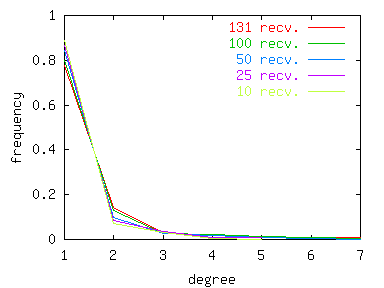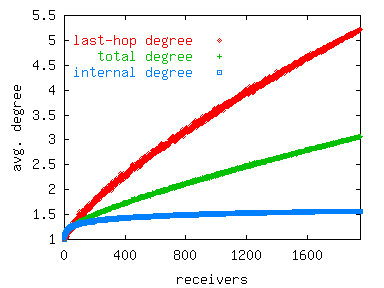|
Little previous research has focused on how multicast trees are really shaped. Intuitively, it seems that most inter-domain multicast trees should have a similar shape since most receivers are necessarily in different domains than the source. Therefore, the distribution tree must take a number of hops to traverse the sources own domain, cross the backbone and then the domains of each receiver. This should result in tall trees where most of the branching occurs at a limited number of peering points within the backbone and at edge routers near the receivers.
In our study, we focus on this branching and where it occurs within the tree. When we're talking about branching, however, we are really looking at each nodes out-degree. Work done by Faloutsos et al.('99) showed that the degree frequencies of Internet routers follow a skewed distribution; only a few routers have a high degree while most have a very low degree. The graph in the next column shows a similar effect for inter-domain multicast trees. We found that nearly 80% of the routers had an out-degree of one. This results in long chains of relay nodes that simply pass the packets along a single path.
|

|

|


